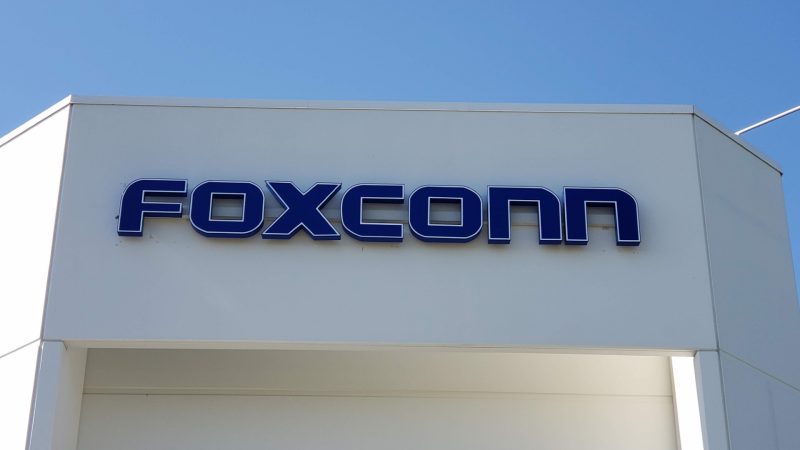Gov. Tony Evers today hailed a new contract with Foxconn as a “better deal for our state” as it slashes the maximum tax credits the company could earn while providing more flexibility after plans for the southeastern Wisconsin plant were dramatically scaled back.
Under the new deal, Foxconn could qualify for $80 million in state assistance if it creates 1,454 jobs and invests $672 million in its Mount Pleasant operation by Dec. 31, 2025, the guv’s office said.
The original deal called for the company to receive up to $3 billion from the state in return for creating 13,000 jobs and investing $10 billion. But Foxconn had already fallen behind the minimum job creation requirements to qualify for state assistance.
“When I ran to be governor, I made a promise to work with Foxconn to cut a better deal for our state — the last deal didn’t work for Wisconsin, and that doesn’t work for me,” Evers said in a release.
>> WisPolitics is now on the State Affairs network. Get custom keyword notifications, bill tracking and all WisPolitics content. Get the app or access via desktop.
The guv’s office also said the deal would allow Foxconn to qualify for the tax incentives without specific requirements as to what it produces or manufactures, similar to other deals, so long as it meets the hiring and capital investment targets. The company has frequently revised what it might produce at the plant.
In a statement, the company praised the deal for giving it “the flexibility to pursue business opportunities in response to changing global market conditions. With this flexibility also comes the predictability and stability to know that Foxconn’s material contributions in Wisconsin will be recognized by the State as benchmarks are achieved year-over-year.”
Like the original contract, workers would have to earn an average wage of $53,875 for their jobs to count toward the requirement. Some of the changes include revisions to clawback provisions if Foxconn fails to live up to its end of the contract.
WEDC Board member Assembly Minority Leader Gordon Hintz, D-Oshkosh, said the board vote this afternoon was unanimous.
The company originally planned to produce flat screens as large as garage doors at what former President Trump vowed would be the “eighth wonder of the world.” But the company began scaling down the vision for the plant not long after plans were first announced.
Foxconn failed to employ enough people in 2018 or 2019 to qualify for state credits. Meanwhile, the Evers administration informed the company in October it wouldn’t qualify for any credits until a new contract was reached because the original scale of the project had been reduced so dramatically.
The state’s last audit of Foxconn job numbers found it had created 281 positions that met the qualifications for tax credits under the original deal in 2019, short of the 520 minimum needed to qualify that year.
Under the original contract, the company’s goal was to have 2,080 full-time jobs by the end of 2019 with a capital investment of more than $3.3 billion.
Sen. Dan Feyen, R-Fond du Lac and a member of the WEDC Board, said he supported the new contract because it made sense considering the smaller scale of the project.
Backers of the original deal argued it would create a ripple effect through the economy in southeastern Wisconsin, attracting companies looking to be part of the Foxconn supply chain as well as those that would serve the predicted influx of employees. Then-GOP Gov. Scott Walker dubbed the project “Wisconn Valley,” saying it would transform the economy just as Silicon Valley did in California.
“When you’ve got 13,000 people and you’ve got a plant that big, the supply chain is just massive. That would’ve been a good deal if all those numbers would’ve transpired,” Feyen said. “It became evident the scope of the project had changed, and this is a good deal for the state as well.”
According to a comparison of the original deal to the new contract from Evers’ office, the job credit rate is now equal to 7 percent of wages. It was 17 percent under the original contract.
Hintz, a frequent Foxconn critic, said the new deal creates more realistic expectations for the project and puts the tax credits more in line with those offered to other companies in a typical state incentive deal.
He also argued it was better to strike a new deal with the company considering the significant resources already put into the project — particularly by local governments — rather than risking the company’s departure.
Adding in local investments, infrastructure and utility work pushed the maximum price tag on the initial incentive package to nearly $4 billion if Foxconn had hit all of the hiring and capital investment goals.
“Today is part of rightsizing and moving on from really what was a poorly idealized deal, and I think it’s perhaps the beginning of a more honest relationship between Foxconn and the state,” Hintz said.



